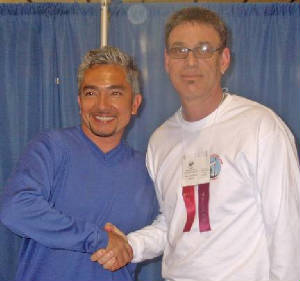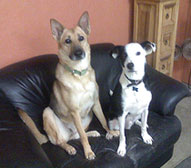We often talk about post-traumatic stress disorder as it pertains to people. But Post-Traumatic Stress Disorder (PTSD) in dogs is a real and documented condition, often seen in animals that have experienced abuse, neglect, abandonment, or other traumatic events.
While many adopted dogs adjust well to their new homes, some may exhibit long-term behavioral and emotional responses linked to past trauma. The problem for some dog owners is that you may not know that the dog has this challenge until after you adopt it. The history of a dog’s life is not always known, so you may need to pay attention to how your dog reacts in specific situations to see if your dog may be struggling.
What Are the Signs of Post-Traumatic Stress in Dogs?
Dogs don’t hide their emotions. But that doesn’t mean that it’s always easy to notice when there’s a problem. Pay attention to signs such as:
- Hypervigilance and Easily Startled Behavior
Dogs with PTSD often remain in a heightened state of alertness, reacting intensely to sudden movements, noises, or unfamiliar people. They may flinch or cower at loud sounds. They may look like they’re always scanning their environment, even in safe spaces. They may startle easily at touch or unexpected movement. They may also visibly not look like they’re ever truly relaxed.
- Avoidance of Specific People, Places, or Objects
A traumatized dog may associate certain stimuli with past negative experiences and attempt to avoid them. These include hiding when approached by certain individuals, such as men, children, etc., or refusing to enter specific rooms, or avoiding household objects or items that could have caused harm.
- Aggression or Defensive Behavior
Dogs are not typically aggressive very quickly (though this can happen), but is especially common when a dog has PTSD. Fear-based aggression is common in dogs with PTSD, as they may feel the need to protect themselves from perceived threats. They may show teeth, growl, snap, or bark when they feel like they’re cornered or stuck in some way. They may even be extra aggressive around toys or resting areas.
- Repetitive Behaviors
Trauma can lead to compulsive behaviors that serve as coping mechanisms for anxiety. These behaviors may include excessive licking or chewing of their paws, tail, or body, repetitive pacing or spinning in circles, tail chasing, and digging.
- Withdrawal and Depression-Like Symptoms
Some adopted dogs with PTSD may exhibit signs of emotional shutdown or depression, including low energy and reluctance to engage in play or social interactions, excessive sleeping or lethargy, or ignoring food, treats, and affection from caregivers with no sign of illness.
Other symptoms may include separation anxiety, or issues with urination despite being otherwise potty trained.
Fear vs Anxiety vs PTSD
It should be noted, however, that many of these symptoms are signs of anxiety in dogs, or could be a dog that’s not well trained, or may have been a dog with a tough, neglected life – but not necessarily one with PTSD.
We are happy to talk to you about your dog and determine if we can tell if it’s PTSD or something else. It’s not always something we can know with certainty, but we can try.
Get Help for a Dog with PTSD
For dog owners that are concerned that their pet may have PTSD, reach out today for more information. We can chat about what we can do to support you, and provide you with dog training online or in person or dogs that are showing stress and anxiety.





